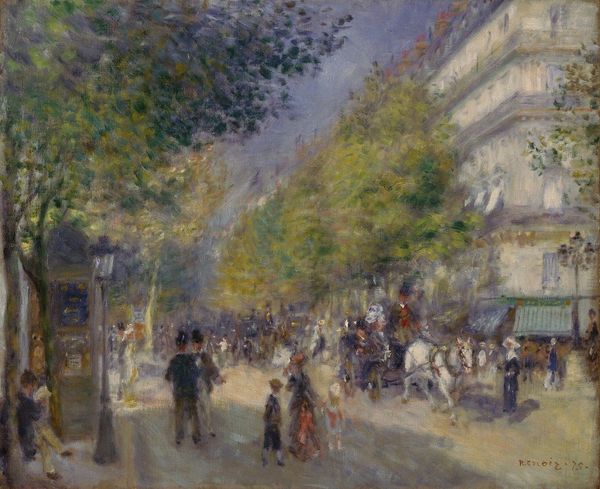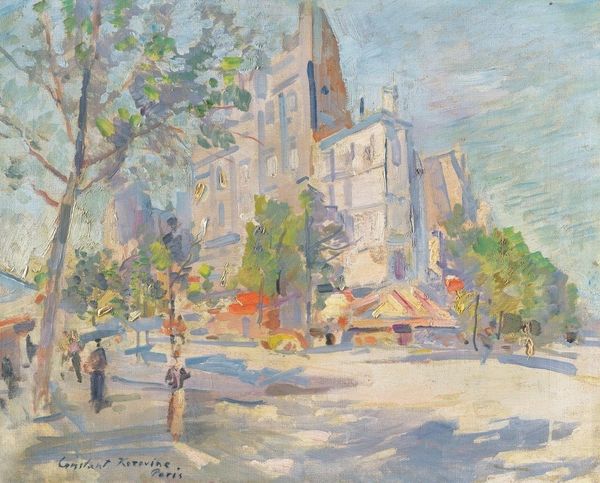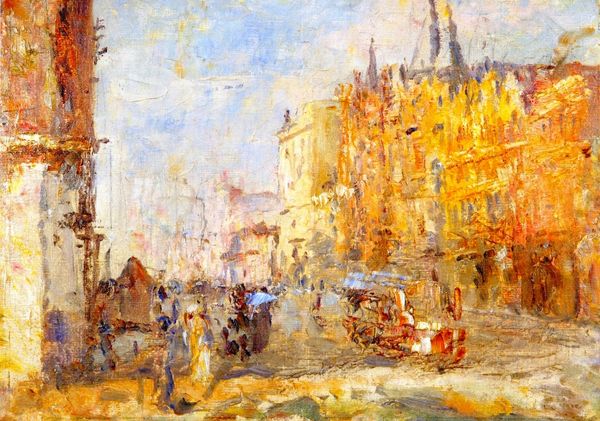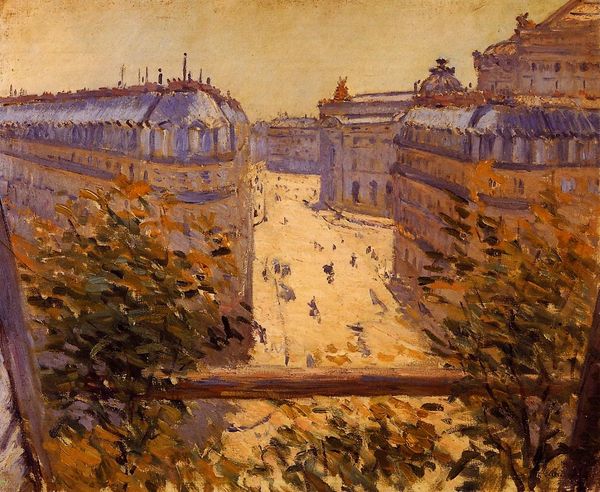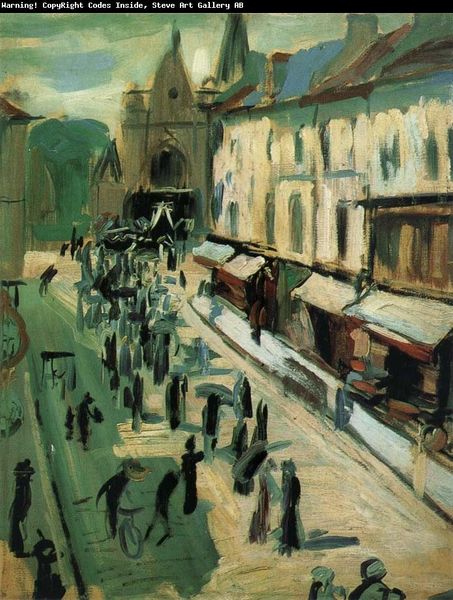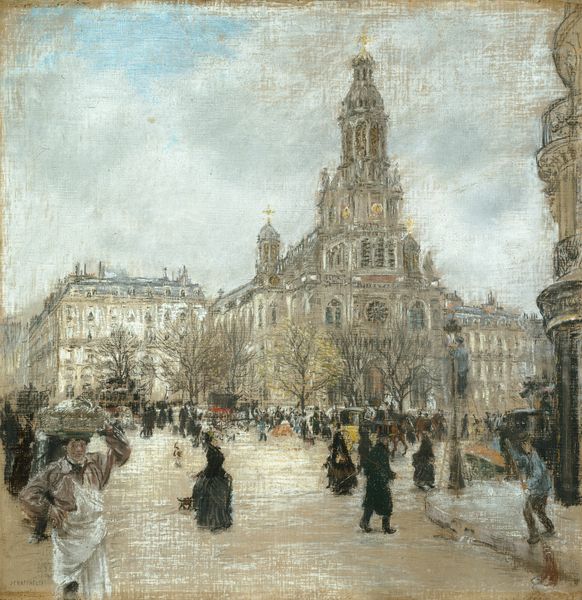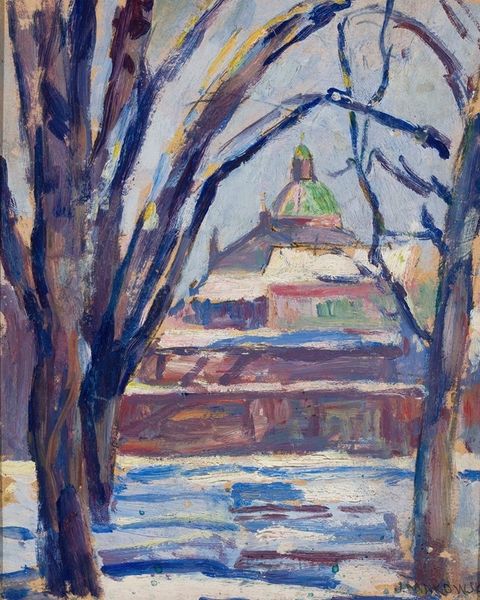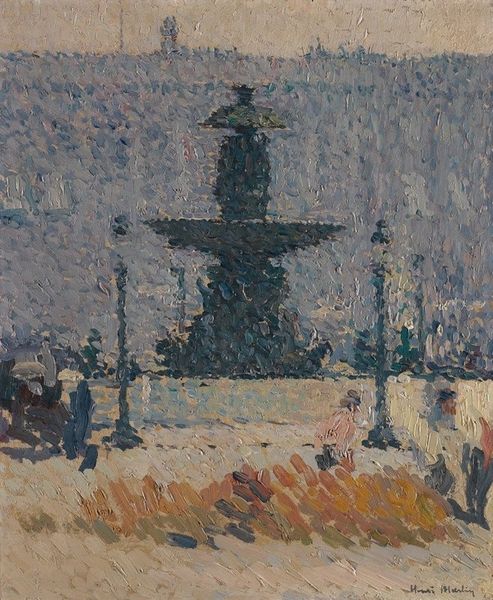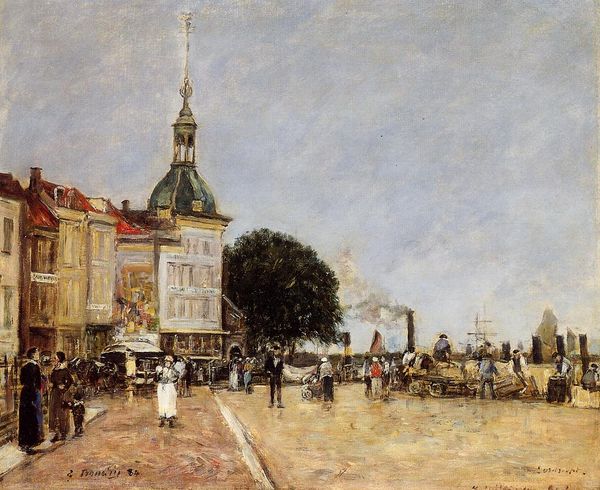
Copyright: Public domain
Curator: Robert Henri's "Place in Paris," painted in 1897, presents an evocative glimpse of Parisian street life during the Impressionist era. Editor: My first thought? It feels overcast and full of the gritty, working pulse of a city. You can almost smell the coal smoke mixed with something faintly floral. Curator: Indeed. The atmospheric conditions certainly shape our perception. Look closely at how Henri uses a broken brushstroke and a muted palette to capture the diffuse light, which creates a sense of transience, of a fleeting moment observed and immediately recorded. Notice how he places that looming metallic tower? Editor: And speaking of that tower! What an incredible imposition of industrial advancement onto what might have otherwise been another charming, garden-variety cityscape. But let’s not forget, this wasn't just about aesthetic pleasure; it was documenting the changing urban fabric and, you know, the very literal materials of modernity being erected all around them. Consider the societal impact and what laborers experienced as they worked those towers into existence. Curator: The juxtaposition is striking. The visible brushwork speaks to Henri's own hand in constructing this reality. There's a deliberate flatness, a reduction of depth that aligns the painting more closely to the picture plane. The muted color harmonies and composition draw you back to this piece’s structural framework, this idea of space. Editor: Well, it makes me think about the consumption of these rapidly transforming spaces. People bought into this vision of a modern, industrialized Paris and all its steel parts and potential. You see that carriage rolled out like it was no trouble, while workers put in endless days to build everything we see around it. I want to know about those processes, you know? The backstages, really. Curator: It’s a painting that lingers in the memory long after you've moved on. Editor: Absolutely, although I leave contemplating the socioeconomic impact on workers then and artists like Henri later. I find I now view the painting through the lens of materials and social evolution.
Comments
No comments
Be the first to comment and join the conversation on the ultimate creative platform.



